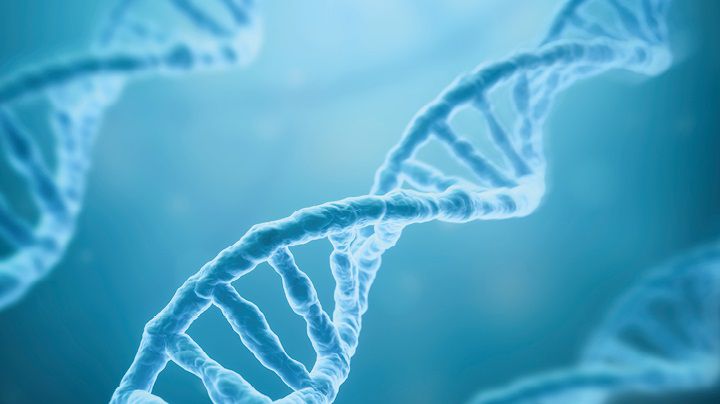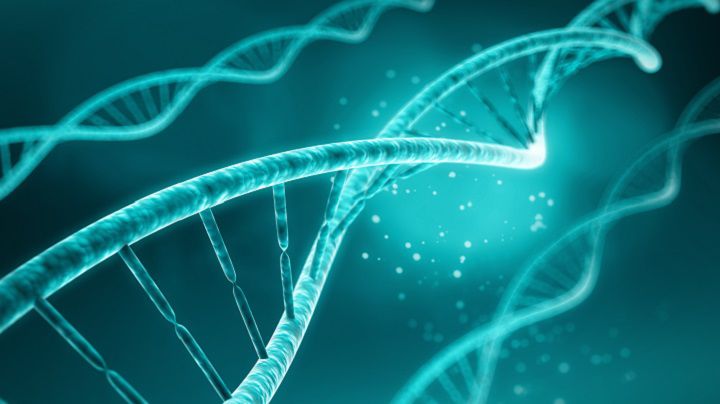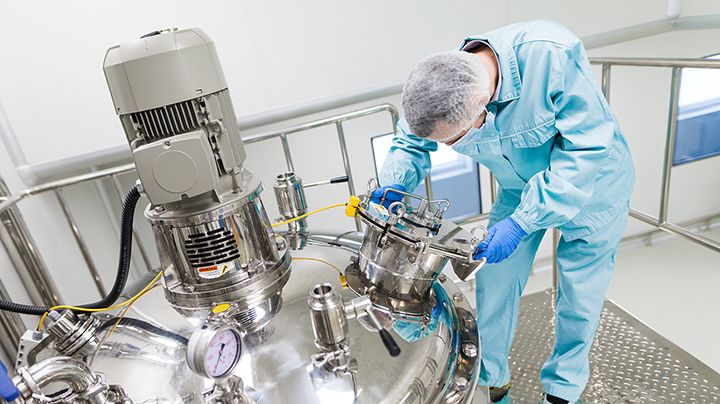Purification Resins for PCR Testing, Medical Imaging, and Clinical Diagnostics
DuPont™ AmberLite™ XAD™ Polymeric Adsorbent Resins and DuPont™ AmberChrom™ Chromatography Resins.
Purification solutions for the manufacturing of accurate and reliable diagnostics
All diagnostic approaches rely on accurate identification and measurement of targets, including testing of bodily fluids (blood, urine), medical imaging, and PCR-based diagnostics. Sensitive tests are less prone to false negatives and help medical professionals manage patient healthcare. This requires consistent manufacturing of high-purity detection agents to provide accurate results. Each diagnostic approach, however, has different purification needs.
PCR testing offers quick identification of infectious agents. Short DNA segments are designed to recognize and bind to genetic sequences unique to the infectious agent. The process generates a signal that can be detected and measured by the diagnostic device. Reverse phase HPLC is used in the manufacturing process to purify the primers, probes, and DNA building blocks used in PCR testing.
Medical diagnostic imaging uses contrast agents to improve the diagnostic quality of medical images. These contrast materials are ingested or injected to provide higher contrast between sections of the body. The most common contrast media are based on iodine, barium-sulfate, or gadolinium compounds. Polymer resins are used during the manufacturing of contrast media to purify intermediates and final products.
Polymeric adsorbent resins are used in clinical settings to prepare blood and urine for diagnostic tests. The resins adsorb molecules from blood or urine, allowing clinicians to remove compounds that interfere with the test. In some cases, the resin may be used to capture and concentrate the target analyte for further investigation.
Purification solutions for PCR tests, contrast agents, and blood testing
Purification of primers and probes for PCR and RT-PCR tests
Primers and probes play critical roles in PCR testing. These short oligonucleotides recognize specific DNA segments of the target infectious agent. A test sample is heated to separate DNA into individual strands. If the primers and probes find matching DNA segments, they bind to the DNA strand. DNA building blocks then add to the primers and probes and create additional copies of the DNA.
The cycle of breaking and synthetically rebuilding the DNA is repeated many times. This process is called polymerase chain reaction (PCR), and its purpose is to make multiple copies of the target DNA so that the concentration of target increases to a detectable level. Fluorescently labeled probes are included in the system to provide a quantitative signaling mechanism. When the labeled probe binds to the target DNA sequence, it releases the fluorescent compound and signals the detector.
An analogous technique, reverse transcription PCR (RT-PCR), is needed for the detection of RNA viruses, such as SARS-CoV-2. In these systems, the target RNA is first converted into a complementary DNA copy that is then amplified.
PCR tests need to deliver accurate results since false positives and false negatives can adversely affect patient outcomes. Therefore, it is important that oligonucleotides have high purities for proper DNA recognition and amplification. DuPont™ AmberChrom™ chromatography resins provide excellent resolution in reverse phase HPLC, allowing diagnostics manufacturers to separate target oligonucleotide sequences from impurities. Products are available as bulk resin and in pre-packed columns called DuPont™ Profile™ columns.
View all products for chromatography in our product finder.
Purification of Gadolinium and other radiopharmaceuticals with DuPont™ XAD™ Adsorption Resins
Contrast agents are inorganic compounds that create contrast between different parts of the body. There are several inorganic compounds that are used in medical diagnostic imaging. Magnetic resonance imaging (MRI) uses gadolinium chelates, such as Gd(III) complexes. X-ray and CT imaging use iodine or barium sulfate contrast agents.
The synthesis of contrast agents is complex and requires many purification steps. Polymeric resins can be used to desalt product streams, capturing the target compounds and organic impurities to allow the inorganic metal salts to rinse through. They are also used to purify organic intermediates and final products, separating the target inorganic-organic contrast agent from the organic reactants.
DuPont™ AmberLite™ XAD™ polymeric adsorbent resin family includes multiple resin options, such as AmberLite™ XAD™ 1600N. Manufacturers of contrast agents can choose the product that gives the balance of selectivity, adsorption capacity, and elution profile. DuPont™ AmberChrom™ chromatography resins can also be used for adsorption, giving manufacturers more options for their production processes.
Purification resins for clinical diagnostics
Conventional culture tests are used for blood testing and urine testing. DuPont™ AmberLite™ XAD™ polymeric adsorbent resins are used to adsorb species from blood or urine to prepare samples for clinical diagnostics. For example:
- Remove antibiotics from blood so blood can be cultured
- Remove compounds that interfere with the diagnostic test
- Selective capture and concentration of analytes to enhance analytical detection
View all products for capture-concentrate in our product finder.
-
Chromatographic Separation
Purification of primers and probes for PCR and RT-PCR tests
Primers and probes play critical roles in PCR testing. These short oligonucleotides recognize specific DNA segments of the target infectious agent. A test sample is heated to separate DNA into individual strands. If the primers and probes find matching DNA segments, they bind to the DNA strand. DNA building blocks then add to the primers and probes and create additional copies of the DNA.
The cycle of breaking and synthetically rebuilding the DNA is repeated many times. This process is called polymerase chain reaction (PCR), and its purpose is to make multiple copies of the target DNA so that the concentration of target increases to a detectable level. Fluorescently labeled probes are included in the system to provide a quantitative signaling mechanism. When the labeled probe binds to the target DNA sequence, it releases the fluorescent compound and signals the detector.
An analogous technique, reverse transcription PCR (RT-PCR), is needed for the detection of RNA viruses, such as SARS-CoV-2. In these systems, the target RNA is first converted into a complementary DNA copy that is then amplified.
PCR tests need to deliver accurate results since false positives and false negatives can adversely affect patient outcomes. Therefore, it is important that oligonucleotides have high purities for proper DNA recognition and amplification. DuPont™ AmberChrom™ chromatography resins provide excellent resolution in reverse phase HPLC, allowing diagnostics manufacturers to separate target oligonucleotide sequences from impurities. Products are available as bulk resin and in pre-packed columns called DuPont™ Profile™ columns.
View all products for chromatography in our product finder.
-
Capture-Concentrate
Purification of Gadolinium and other radiopharmaceuticals with DuPont™ XAD™ Adsorption Resins
Contrast agents are inorganic compounds that create contrast between different parts of the body. There are several inorganic compounds that are used in medical diagnostic imaging. Magnetic resonance imaging (MRI) uses gadolinium chelates, such as Gd(III) complexes. X-ray and CT imaging use iodine or barium sulfate contrast agents.
The synthesis of contrast agents is complex and requires many purification steps. Polymeric resins can be used to desalt product streams, capturing the target compounds and organic impurities to allow the inorganic metal salts to rinse through. They are also used to purify organic intermediates and final products, separating the target inorganic-organic contrast agent from the organic reactants.
DuPont™ AmberLite™ XAD™ polymeric adsorbent resin family includes multiple resin options, such as AmberLite™ XAD™ 1600N. Manufacturers of contrast agents can choose the product that gives the balance of selectivity, adsorption capacity, and elution profile. DuPont™ AmberChrom™ chromatography resins can also be used for adsorption, giving manufacturers more options for their production processes.
Purification resins for clinical diagnostics
Conventional culture tests are used for blood testing and urine testing. DuPont™ AmberLite™ XAD™ polymeric adsorbent resins are used to adsorb species from blood or urine to prepare samples for clinical diagnostics. For example:
- Remove antibiotics from blood so blood can be cultured
- Remove compounds that interfere with the diagnostic test
- Selective capture and concentration of analytes to enhance analytical detection
View all products for capture-concentrate in our product finder.
Select publications using our products in diagnostic applications
Barale, A. et al. (2022) Manufacturing of Dimeric Contrast Agents. WO 2022/023240 A1. Google Patents WO 2022/023240 A1
Lattuada, L. et al. (2019) Contrast Agents. EP 3 442 949 B1. Google Patents EP3442949B1
Carnovale, I.M. et al. (2018) Exploring the Intermolecular Catalysis of the Proton Exchange Process to Modulate the Relaxivity of Gd (III)-Complexes of HP-DO3A-Like Ligands. Chemical Communications, 54, 10056-10059. DOI: https://pubs.rsc.org/en/content/articlelanding/2018/cc/c8cc05284k
Ali, M.M. et al. (2012) A Nano-sized PARACEST-fluorescence Imaging Contrast Agent Facilitates and Validates in vivo CEST MRI Detection of Glioma. Nanomedicine 7(12):1827-1837. DOI: https://doi.org/10.2217/nnm.12.92
Elemento, E. (2008) New Gadolinium Contrast Agents for MRI. Ph.D. Thesis submitted to the Department of Chemistry at Durham University. URL: http://etheses.dur.ac.uk/2266/
Yoo, B. (2007) Peptidyl Molecular Imaging Contrast Agents Using a New Solid-Phase Peptide Synthesis Approach. Bioconjugate Chemistry 18(3), 903-911. DOI: https://doi.org/10.1021/bc060250q
Yoo, B. (2007) Molecular Imaging of Breast Cancer Using Paracest MRI. Ph.D. Thesis submitted to the Department of Biomedical Engineering Department at Case Western Reserve University School of Graduate Studies. URL: https://etd.ohiolink.edu
Lorenzini, R.A., et al. (2007) Process for the Preparation of Iopamidol, US 7,282, 607 B2. URL: https://patentimages.storage.googleapis.com/0d/9e/f4/e3d5b43507ea32/US7282607B2.pdf
Want to try a product?
View the Diagnostics page of our e-store.
Explore other bioprocessing applications

We enable complicated separations for drug synthesis resulting in better outcomes for patients and life science companies.

Design trityl-on and trityl-off oligonucleotide purification processes for high yield and high purity with DuPont™ AmberChrom™ Chromatography Resins.

Reverse phase HPLC and ion exchange chromatography for purification of insulin, vaccines, peptide antibiotics, and custom peptides.

DuPont™ AmberLite™ adsorption resins and ion exchange resins for isolating, purifying, and concentrating polyphenols, alkaloids, and heparin.

Learn more about DuPont's polymeric resins for purifying vitamins, steroids, and aminoglycoside and beta-lactam antibiotics.
Related resources
See what’s possible
Ask how we can help solve purification challenges in diagnostics manufacturing.


